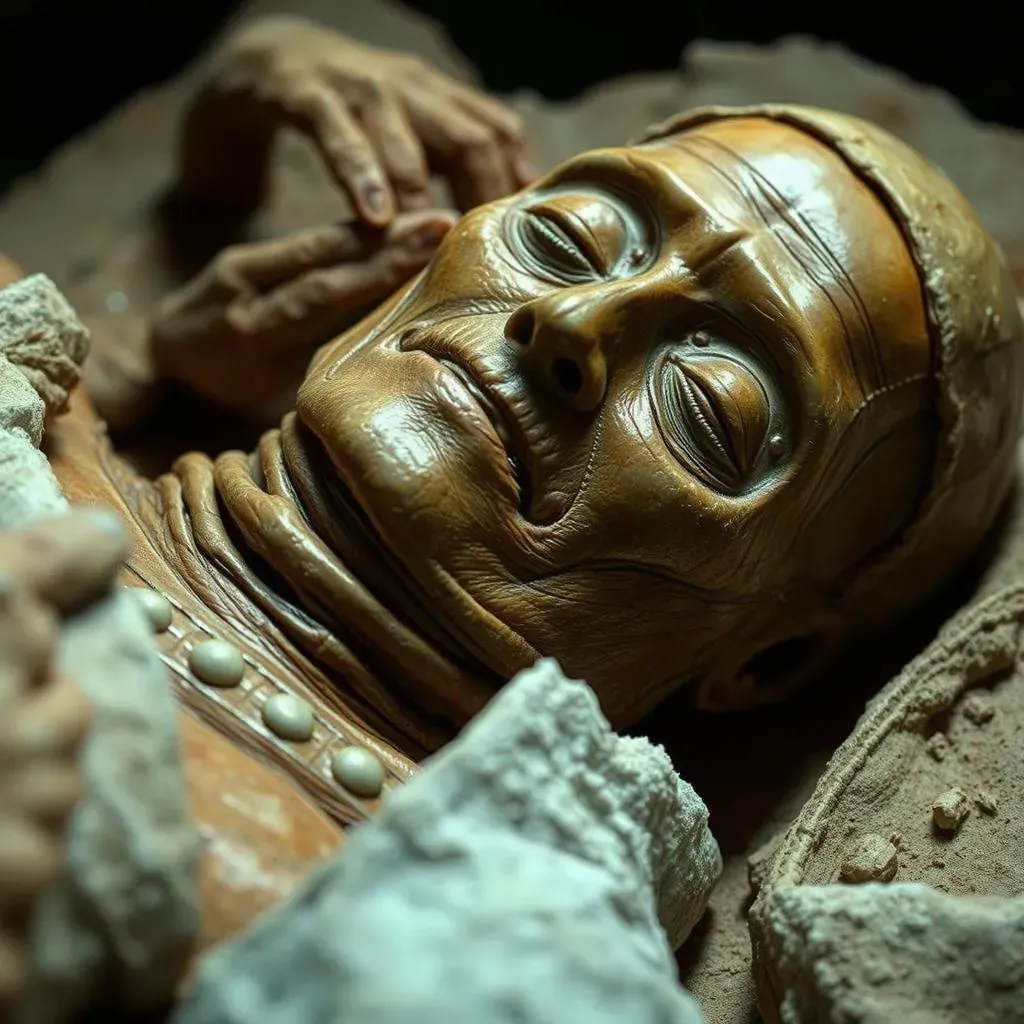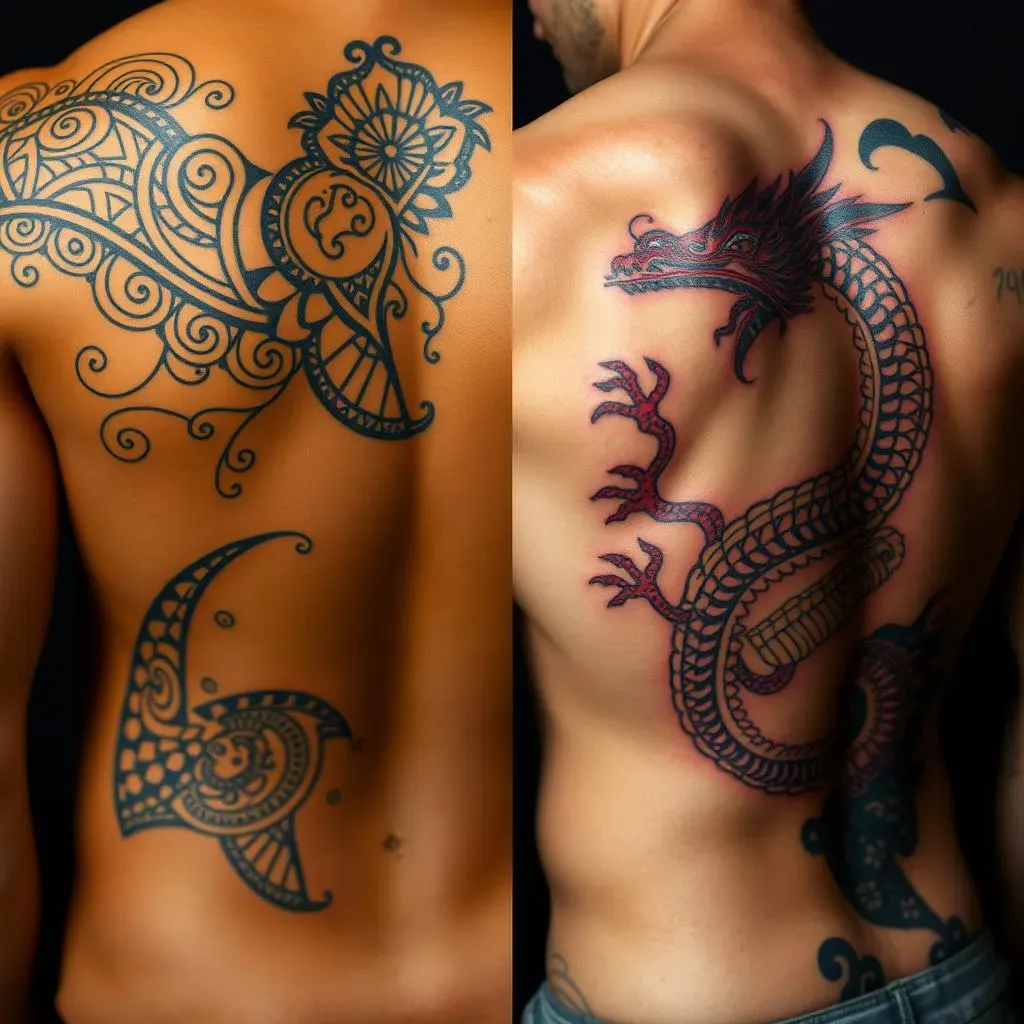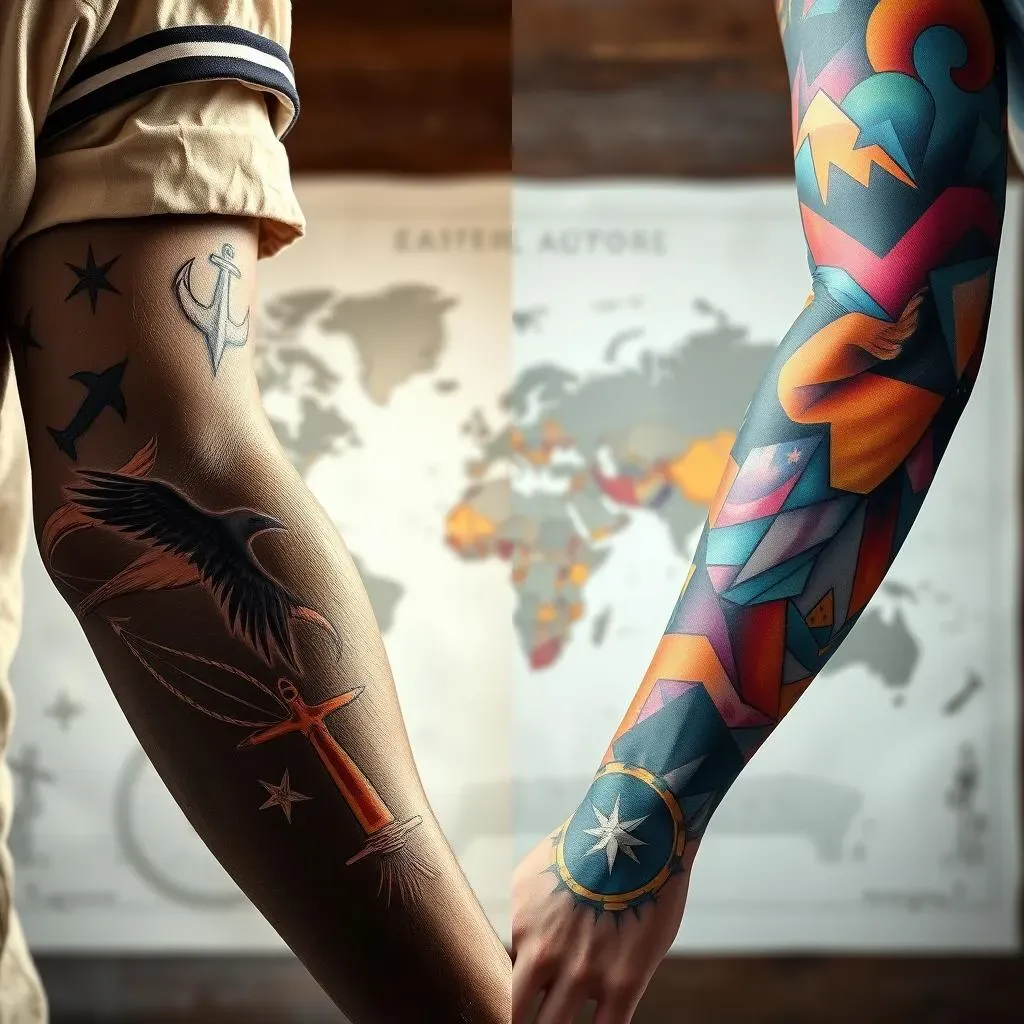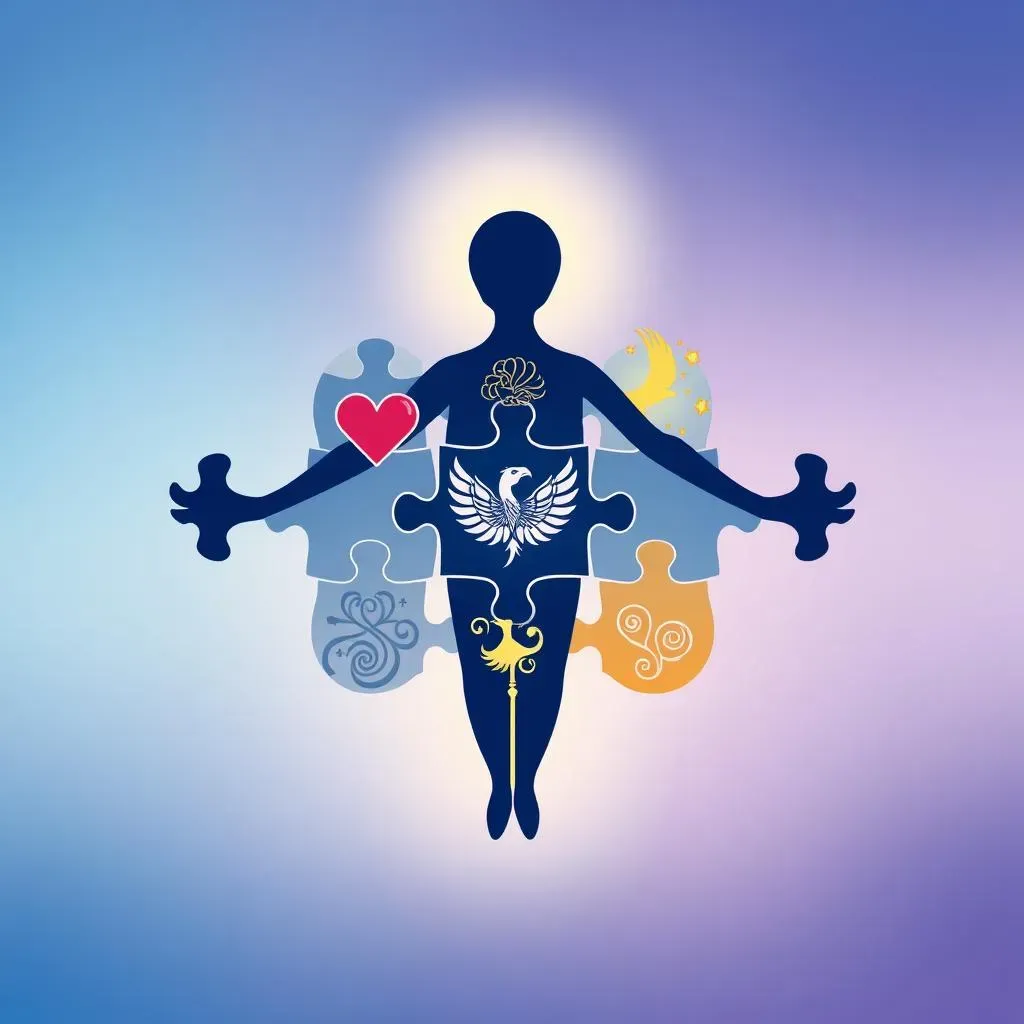Table of Contents
Tattoos, a practice as old as civilization itself, have served myriad purposes throughout history. From marking status and affiliation in ancient societies to becoming a powerful form of self-expression in the modern world, tattoos tell stories etched in ink. But what about the intersection of tattoos and Dissociative Identity Disorder (DID)? This article embarks on a journey through the captivating history of tattooing, exploring its cultural roots and its evolution into the vibrant art form we know today. We'll delve into the traditional practices across different regions, examining how tattoos have been used to convey identity, spirituality, and belonging. As we transition to the modern era, we'll uncover the military's surprising role in popularizing tattoos and how this art form has transformed into a mainstream phenomenon. Finally, we'll address the unique considerations surrounding DID tattoos, offering insights and personal experiences for those navigating this complex landscape. Whether you're a tattoo enthusiast, a student of history, or simply curious about the world of DID tattoos, prepare to discover the rich tapestry woven by ink and skin.
Ancient Roots of Tattooing: A Historical Journey
Ancient Roots of Tattooing: A Historical Journey
Traces in Ancient Mummies
Imagine stumbling upon a frozen mummy, preserved for millennia, only to discover intricate patterns etched into its skin. That's precisely what happened with Ötzi the Iceman, whose 5,300-year-old body revealed 61 tattoos. These weren't just random markings; they were carefully placed lines and dots, possibly used for therapeutic purposes, resembling acupuncture points. Ötzi isn't alone. Mummies from Egypt and Siberia also bear tattoos, pushing back the timeline of this ancient practice and proving that humans have been adorning their bodies with ink for a very, very long time.
These discoveries rewrite our understanding of early human cultures. It wasn't just about survival; it was about expression, healing, and perhaps even spiritual connection. The tools they used were rudimentary – sharpened stones, bone needles, and natural pigments – yet the results were enduring. These ancient tattoos are a testament to the ingenuity and artistry of our ancestors, offering a glimpse into their beliefs and practices.
Global Spread and Early Meanings
Tattooing wasn't confined to a single region. It popped up independently across the globe, from the Americas to Asia and beyond. In ancient Egypt, tattoos were primarily found on women, possibly linked to fertility rituals or status symbols. Siberian mummies revealed elaborate animal motifs, suggesting tribal affiliations or spiritual beliefs. Each culture adapted the practice to its own unique context, using readily available materials and imbuing the tattoos with specific meanings.
What’s truly fascinating is how these early tattoos often transcended mere decoration. They could signify bravery, mark rites of passage, offer protection, or even act as a form of punishment. Think of the ancient Romans, who tattooed criminals and slaves, or the early Japanese cultures where tattoos were used to denote social standing. The human body became a canvas for storytelling, a living record of an individual's journey and their place within the community. The permanence of ink mirrored the enduring nature of these cultural values.
Culture | Region | Possible Meanings |
|---|---|---|
Ötzi the Iceman | European Alps | Therapeutic, Pain Relief |
Ancient Egypt | North Africa | Fertility, Status |
Siberian Tribes | Central Asia | Tribal Affiliation, Spirituality |
Tattoos Across Cultures: Traditional Practices and Meanings
Tattoos Across Cultures: Traditional Practices and Meanings
Polynesian Tattooing: A Tapestry of Lineage and Status
If you want to see tattoos used as a language, look no further than Polynesia. For centuries, cultures like the Māori, Samoan, and Tahitian peoples have used intricate tattoo designs to communicate everything from lineage and social standing to personal achievements and spiritual beliefs. These weren't just pretty pictures; they were complex visual narratives etched onto the skin. Take the Māori "moko," for example, a facial tattoo that was a deeply personal statement of identity, almost like a fingerprint. The designs were unique to each individual, reflecting their ancestry, accomplishments, and place within the community.
The process itself was a sacred rite, often performed by skilled tattoo artists who held a high position in society. They used tools made from bone, shell, and wood, tapping the pigment into the skin with a mallet. The pain was intense, but it was seen as a necessary part of the transformation, a physical manifestation of the individual's journey. The placement of the tattoo was also significant, with different areas of the body holding specific meanings. A warrior might have tattoos on his arms to represent his strength, while a chief might have them on his face to signify his authority.
Japanese Irezumi: Art, Rebellion, and Transformation
Moving across the globe to Japan, we encounter "irezumi," a style of tattooing with a rich and complex history. Initially used to mark criminals, tattoos gradually evolved into a form of artistic expression, often associated with the Yakuza, the Japanese mafia. These weren't your typical small designs; irezumi often covered large portions of the body, depicting mythical creatures, historical figures, and symbols of courage and strength. Think dragons, koi fish, and fierce warriors, each meticulously rendered in vibrant colors.
The process of getting irezumi was (and still is, in some circles) a test of endurance and commitment. Traditional artists use hand-poked needles ("tebori") to inject the ink, a technique that can take years to complete a full-body suit. The pain is considerable, but it's seen as a way to prove one's dedication and resilience. While irezumi has often been stigmatized in Japanese society due to its association with organized crime, it's also recognized as a significant art form, a testament to the skill and artistry of the tattoo masters who keep this tradition alive. It's a fascinating example of how tattoos can simultaneously represent rebellion and cultural pride.
Culture | Region | Key Characteristics |
|---|---|---|
Polynesian (Māori, Samoan) | Pacific Islands | Intricate patterns, lineage markers, social status |
Japanese (Irezumi) | East Asia | Large-scale designs, mythical creatures, association with Yakuza |
The Evolution of Tattooing: From Military to Modern Art
The Evolution of Tattooing: From Military to Modern Art
From Sailor's Scars to Symbols of Patriotism
The military played a surprising role in bringing tattoos into the mainstream, particularly in the West. Think about sailors in the 18th and 19th centuries, traveling the globe and encountering different tattooing traditions. They brought these practices back home, popularizing simple designs like anchors, nautical stars, and swallows. These weren't just decorations; they were badges of honor, symbols of experience, and reminders of home. A sailor might get an anchor to signify a successful crossing of the Atlantic, or a swallow for every 5,000 nautical miles traveled. Tattoos became a way to tell their stories, to carry their adventures on their skin.
In the United States, the Civil War and subsequent conflicts further solidified the link between tattoos and military service. Soldiers often got tattoos to identify themselves in case they were killed or wounded, or simply as a form of camaraderie. Patriotic symbols like eagles and flags became common, solidifying tattoos as a marker of national pride. The invention of the electric tattoo machine in the late 19th century made the process faster and more accessible, further fueling the trend. It's a fascinating evolution, from practical identification to a powerful expression of patriotism and belonging within a specific community.
Military Era | Common Tattoo Symbols | Significance |
|---|---|---|
18th-19th Century Navy | Anchors, Stars, Swallows | Safe Passage, Experience, Nautical Miles Traveled |
US Civil War Onward | Eagles, Flags | Identification, Patriotism, Camaraderie |
The Rise of Tattoo Culture and Artistic Innovation
The 20th century saw a dramatic shift in the perception of tattoos. No longer confined to sailors and soldiers, tattoos began to permeate other subcultures, from bikers and rock stars to artists and intellectuals. Tattoo parlors started popping up in cities across the globe, offering a wider range of designs and styles. The stigma surrounding tattoos gradually began to fade, replaced by a growing appreciation for the artistry and self-expression they represented. Think of pioneers like Sailor Jerry, who elevated traditional nautical tattoos into an art form, or Ed Hardy, who brought Japanese influences to Western tattooing.
Today, tattoos are a global phenomenon, embraced by people from all walks of life. The art form has exploded with creativity, incorporating everything from hyper-realism and watercolor techniques to geometric patterns and abstract designs. Tattoo conventions attract artists and enthusiasts from around the world, showcasing the latest trends and innovations. Reality TV shows have further demystified the process, making tattoos more accessible and appealing to a wider audience. It's a far cry from the simple anchors and swallows of the past. Tattoos have become a powerful tool for self-discovery, a way to reclaim one's body and tell one's story in a visually stunning and deeply personal way.
Navigating DID and Tattoos: Considerations and Personal Experiences
Navigating DID and Tattoos: Considerations and Personal Experiences
Understanding DID and Tattooing: A Unique Intersection
Tattoos are deeply personal, but when Dissociative Identity Disorder (DID) enters the equation, the landscape becomes more complex. DID, characterized by the presence of two or more distinct identities or personality states, can significantly impact the tattoo experience. One alter might be enthusiastic about getting inked, while another may harbor strong reservations or even aversions. Communication and consent become paramount. It's not just about what looks cool; it's about ensuring that all alters are considered and that the tattoo aligns with the overall well-being of the individual. This requires a level of self-awareness and internal dialogue that can be challenging but ultimately rewarding.
Imagine an individual with DID who gets a tattoo chosen by one alter without consulting the others. This could lead to distress, conflict, and even feelings of betrayal within the system. Conversely, a tattoo that is carefully considered and agreed upon by all alters can become a powerful symbol of unity, acceptance, and self-expression. It can be a visual representation of the individual's journey towards integration and healing. The key lies in open communication, mutual respect, and a willingness to compromise.
Practical Tips and Personal Narratives
So, how can someone with DID navigate the world of tattoos safely and effectively? First and foremost, prioritize internal communication. Spend time exploring the feelings and opinions of each alter regarding tattoos. Consider keeping a journal or using other communication methods to facilitate this process. Next, choose a tattoo artist who is understanding, compassionate, and willing to work at your pace. Explain your situation and be prepared to answer questions. A good artist will prioritize your comfort and safety above all else. It might be helpful to have a support person present during the appointment to provide reassurance and grounding.
Many individuals with DID have found tattoos to be a positive and transformative experience. Some use tattoos to represent different alters, while others choose designs that symbolize healing, strength, or connection. One individual shared how they got a tattoo of a phoenix rising from the ashes, representing their resilience and ability to overcome trauma. Another described how each alter chose a small symbol that was incorporated into a larger design, creating a visual representation of their interconnectedness. These stories highlight the potential for tattoos to be a powerful tool for self-discovery and empowerment for individuals with DID, when approached with care and intention.
Consideration | Recommendation |
|---|---|
Internal Communication | Journaling, Group Discussions, Therapy |
Artist Selection | Compassionate, Understanding, Experienced with Trauma |
Support System | Bring a trusted friend or therapist to appointments |
Conclusion: The Enduring Art of Tattooing and Personal Identity
From ancient mummies bearing dotted patterns to modern individuals expressing their inner selves, the practice of tattooing has traversed millennia, adapting and evolving with human culture. Whether used to signify tribal affiliation, commemorate life events, or explore the complexities of identity, tattoos remain a powerful medium for storytelling and self-expression. As we've seen, even within the specific context of DID, tattoos can serve as a means of reclaiming agency, communicating inner worlds, and fostering a sense of wholeness. The journey through the history, cultural significance, and modern applications of tattooing reveals its enduring ability to reflect the human experience, etched permanently onto our skin.